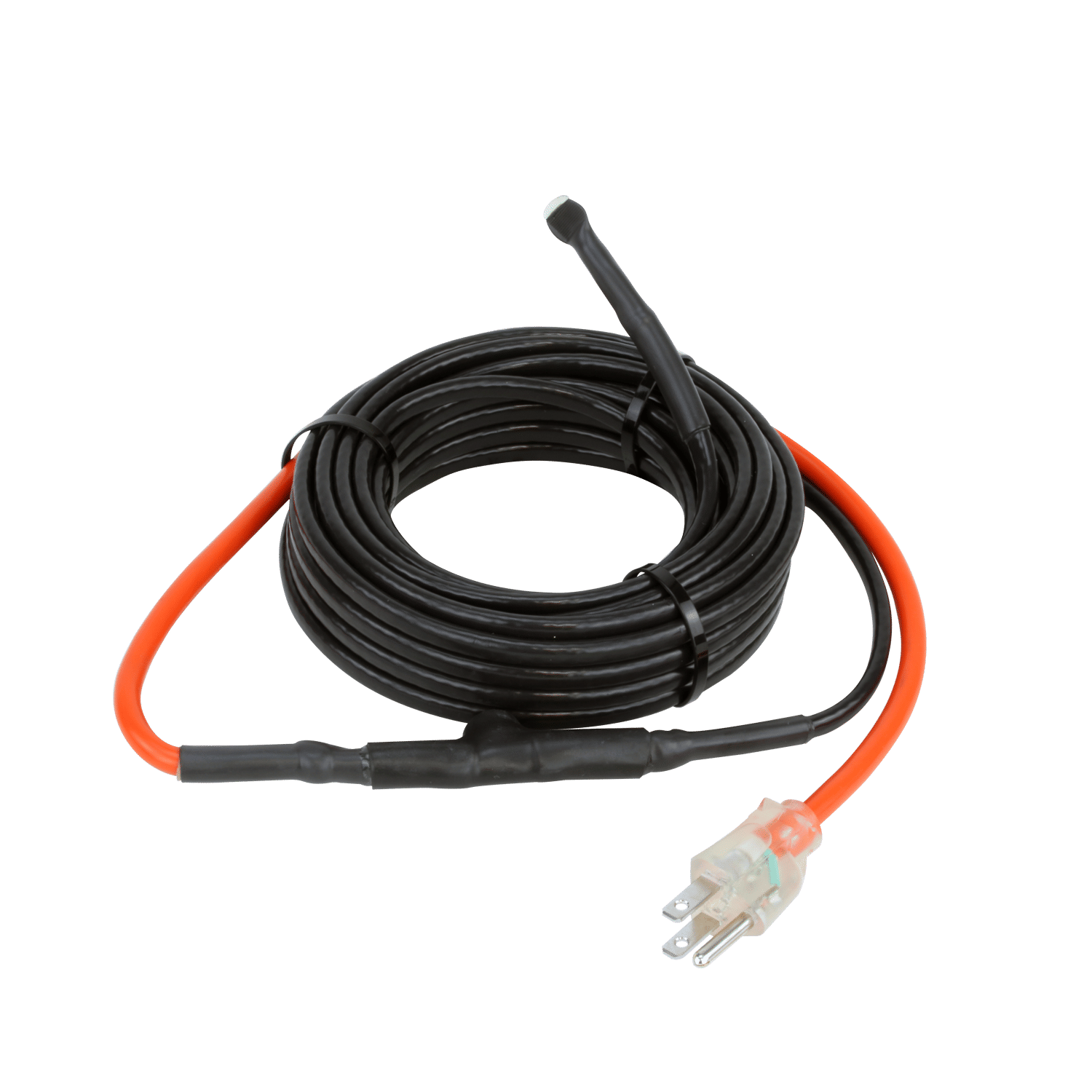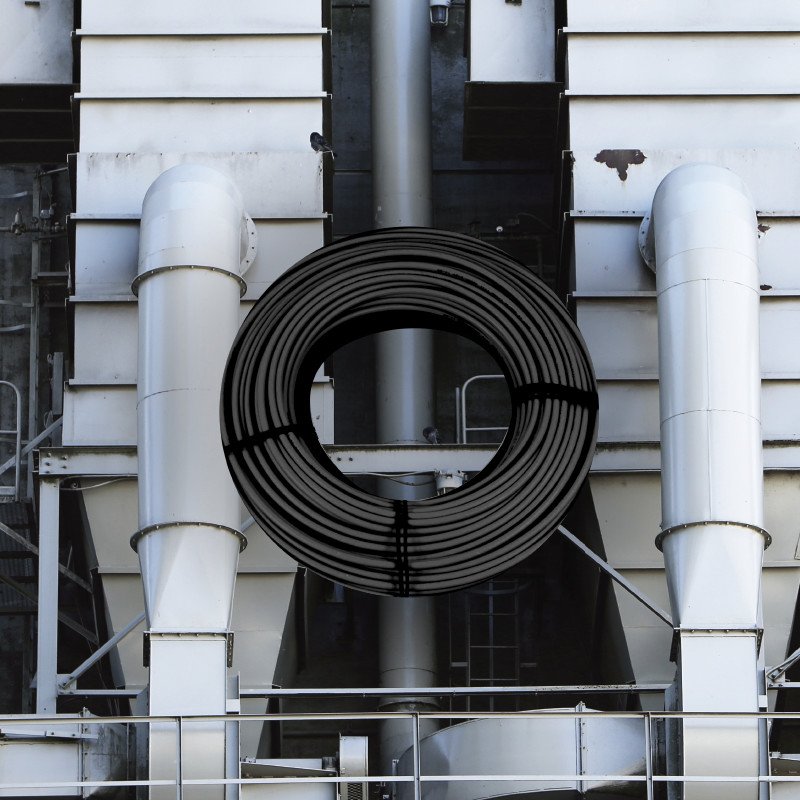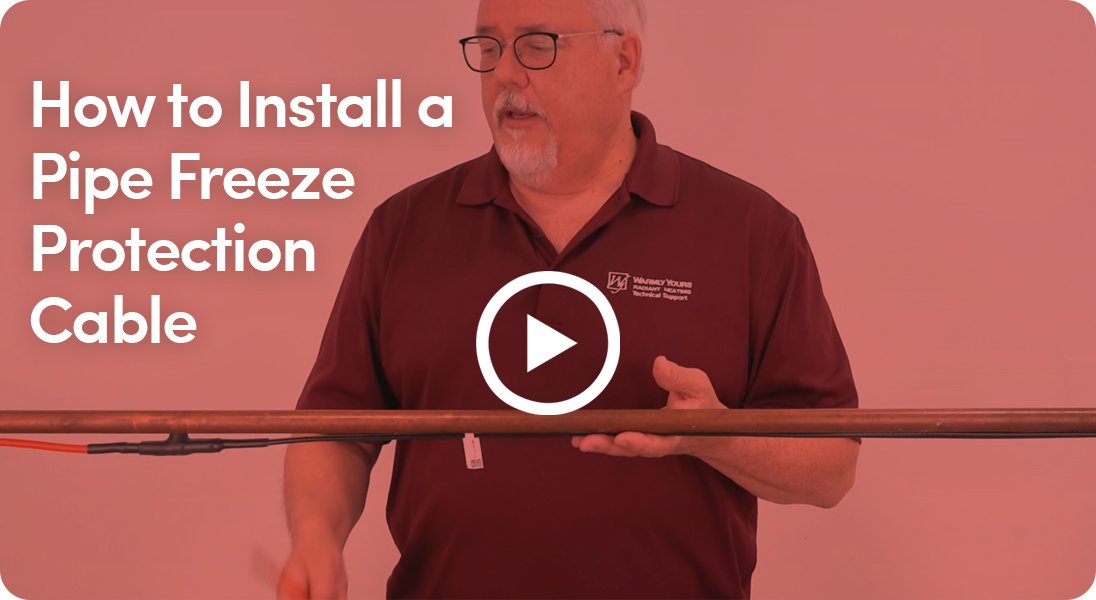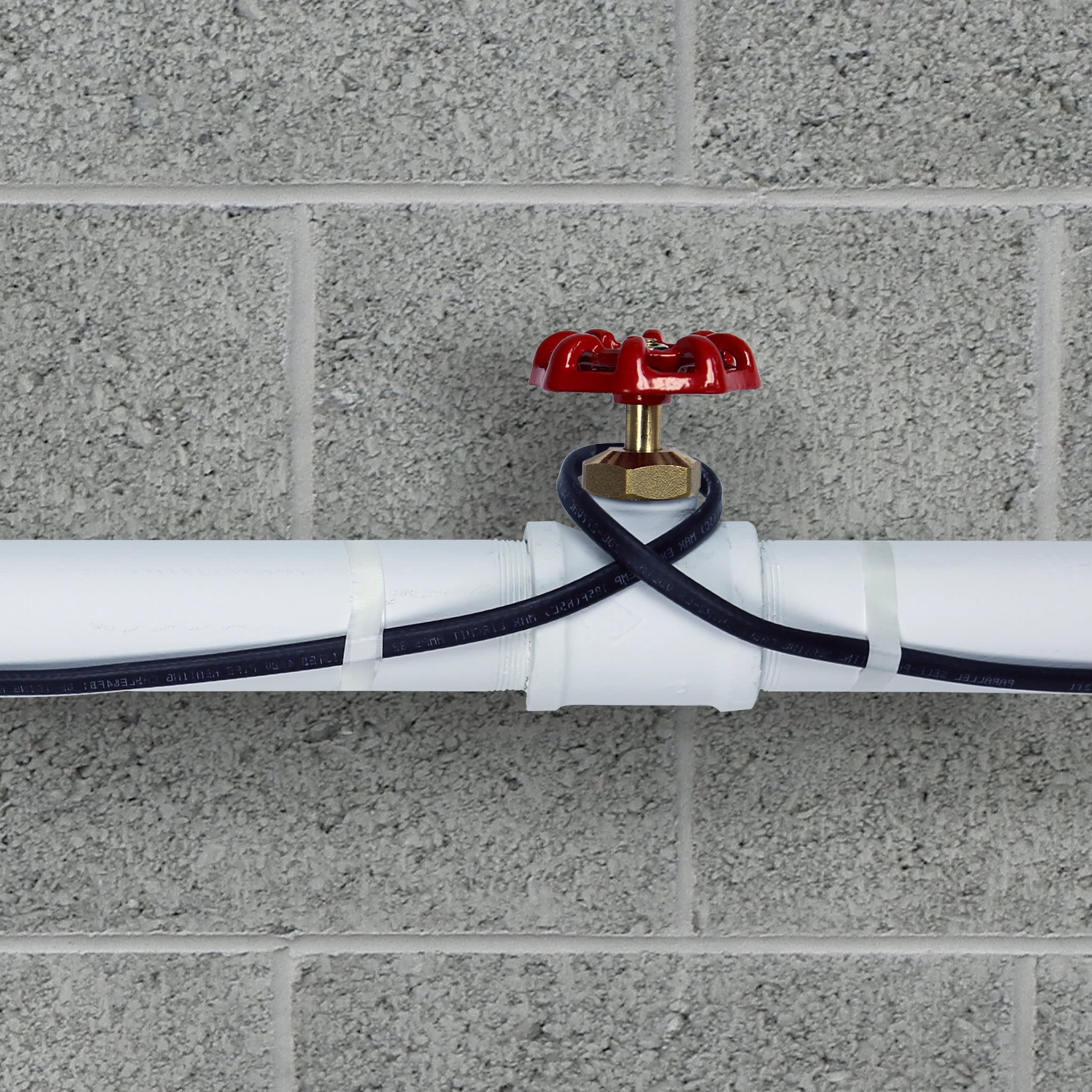If you’ve never had a pipe freeze in the winter, where the frozen water expands and causes a huge icy fountain spraying from your broken pipes, then consider yourself lucky. It doesn’t happen to everyone in every house, but if it happens to you, you’ll never forget it. You’ll end up with a massive ice sculpture emanating from pipes that were never meant to be spewing water and costly damage to the surrounding areas.
People have tried a lot of different methods over the years to ensure that pipes stay in good working order over the cold winter months, mainly including wrapping the pipes in insulation or foam to keep the water inside from freezing. But sometimes that just isn’t enough.
Heat Tape for Pipes
But there is a product that changes the way that we winterize our pipes to ensure that there is no unwanted freezing, and that is heat tape for pipes, also called “heat tracing” or “pipe freeze protection.”
The term “tape” might give you the wrong picture in your head as to what this product is. It’s not a traditional tape that you wrap around the pipe to insulate it. Instead, it’s a flexible heating cable that you attach to the exterior of the pipe, which can run the length of the pipe or be gently wrapped around it.
The product itself works because electricity runs through the inner wires of the cable which generates heat from electrical resistance. This heat is then transferred to the pipe to make sure that non-flowing water pipes don’t freeze.
Types of Heat Tape: Self-Regulating vs. Constant Wattage
Heat tape is available in two different versions: self-regulating and constant wattage. A self-regulating heat tape will increase or decrease its power output (and therefore its effect on the sub-zero pipes) automatically in response to how warm or cool the pipe’s surface temperature is. This is because self-regulating cables are made with a specialized core that becomes more conductive when it’s cold.
Because of the construction of the self-regulating heat tape, it can be overlapped or crisscrossed without fear of overheating or failure. WarmlyYours offers this cable in 5, 8, and 10 watts per linear foot variants. This cable comes in lengths as short as 50 feet and as long as 1,000 feet but it can be cut to any length as needed in the field. This cable type also often has a hardwired electrical connection.

Constant wattage heat tape typically comes with a plug-in electrical connection which makes it very DIY-friendly. These heating elements are called “constant wattage” because the wattage per linear foot remains constant unlike self-regulating. WarmlyYours offers constant wattage cables that provide 7 watts per linear foot in 3′, 6′, 9′, 12′, 15′, 18′, 24′, 30′, 40′, 60′, and 80′ lengths.
Because these heating elements don’t modulate their own heat output, the cables can’t overlap (because of the risk of overheating and damage being caused to the heating elements). Besides the ease of installation (mostly pertaining to the plug-in electrical connection), constant wattage cables are also typically a more economical option.
Where Would You Use Heat Tape?
If you live in a cold region and have read this far then you probably already have some ideas of places where you could use heat tape to help save your pipes. But here are some of the most popular locations for installation.
Exterior Pipes
This is the most obvious use for heat tape. If you have a water pipe that runs outside during the winter, then you are going to want to make sure that it will not freeze and that it will be able to run smoothly and without impediment for the life of the pipe. With heat tape, you can run the tape or cable down and around the length of the pipe to ensure that the pipe, whether it be an outdoor sprinkler pipe, an air conditioning pipe, an exposed irrigation pipe, or any other number of pipes. The heat tape will do all of the work for you to ensure that you get water running through the pipe consistently.
It’s very important to use appropriate weatherproofing and insulation if you do install heat tape for pipes outside. The insulation will help ensure that the cable is able to effectively combat the outside temperature and the weatherproofing will keep the elements from potentially damaging the heating cable itself.

Interior Pipes
You may think that your home is nice and insulated, and that’s usually true, but there are a lot of pipes that run through the walls--on the outer side of the insulation. In effect, the insulation stops the cold air from getting through the wall and into the house, but it doesn’t stop the cold air from getting into the first layer of the wall and freezing the pipes. This can be a MAJOR problem, because if a pipe bursts inside the wall of your house--especially during freezing weather--then you’re in for a world of hurt. Better to use heat tape to wrap those pipes up and make sure that you’ll never have to wonder why water is pouring out of cracks in the wall.
Similarly, basements--especially unfinished basements--are very susceptible to dropping temperatures, and this is a problem because this is where you’re going to see the vast bulk of your unprotected and uninsulated pipes. If you have an unfinished basement with bare cement walls and some studs, then you’re going to want to take a good long look at all of the water pipes that are running to and from your water heater, to your plumbing, to your kitchen and baths, and anywhere else. Protect them with heat tape, and you’ll be golden.
Sewer Pipes
You may not think of sewer pipes freezing, but trust us: the first time a sewer pipe freezes, cracks and leaks (or explodes) you will never, ever forget it. Protect your home, be it in the interior, the basement, the exterior, or anywhere else by wrapping your sewer pipes in heat tape. It may seem like a little thing but the peace of mind that comes from knowing that the cold winter air is never going to explode your sewer pipe is worth its weight in gold.
Why Install Heat Tape for Pipes?
Heat tape for pipes has a lot of benefits, and among them is definitely the fact that you won’t be cleaning up ice-cold water (or sewer) in the middle of winter. But there are also other benefits. Heat tape makes sure that your water is always flowing, and that gives you peace of mind to know that your home will always have reliable water. Second, it avoids unnecessary (and very costly) repair expenses.
Third, heat tape is made to be extremely easy to install. The best advice is to follow the simple instructions in the manual.
Fourth, it’s affordable. The systems are easy to run and don’t need maintenance or upkeep.
Finally, heat tape is safe. They’re often certified by various testing agencies like UL or CSA which means that they’ve been put through the ringer to ensure that they’ll function properly and safely in your home or business.
To see how constant wattage pipe freeze protection cables are installed, click the image below:

Learn more about pipe freeze protection by clicking here.




